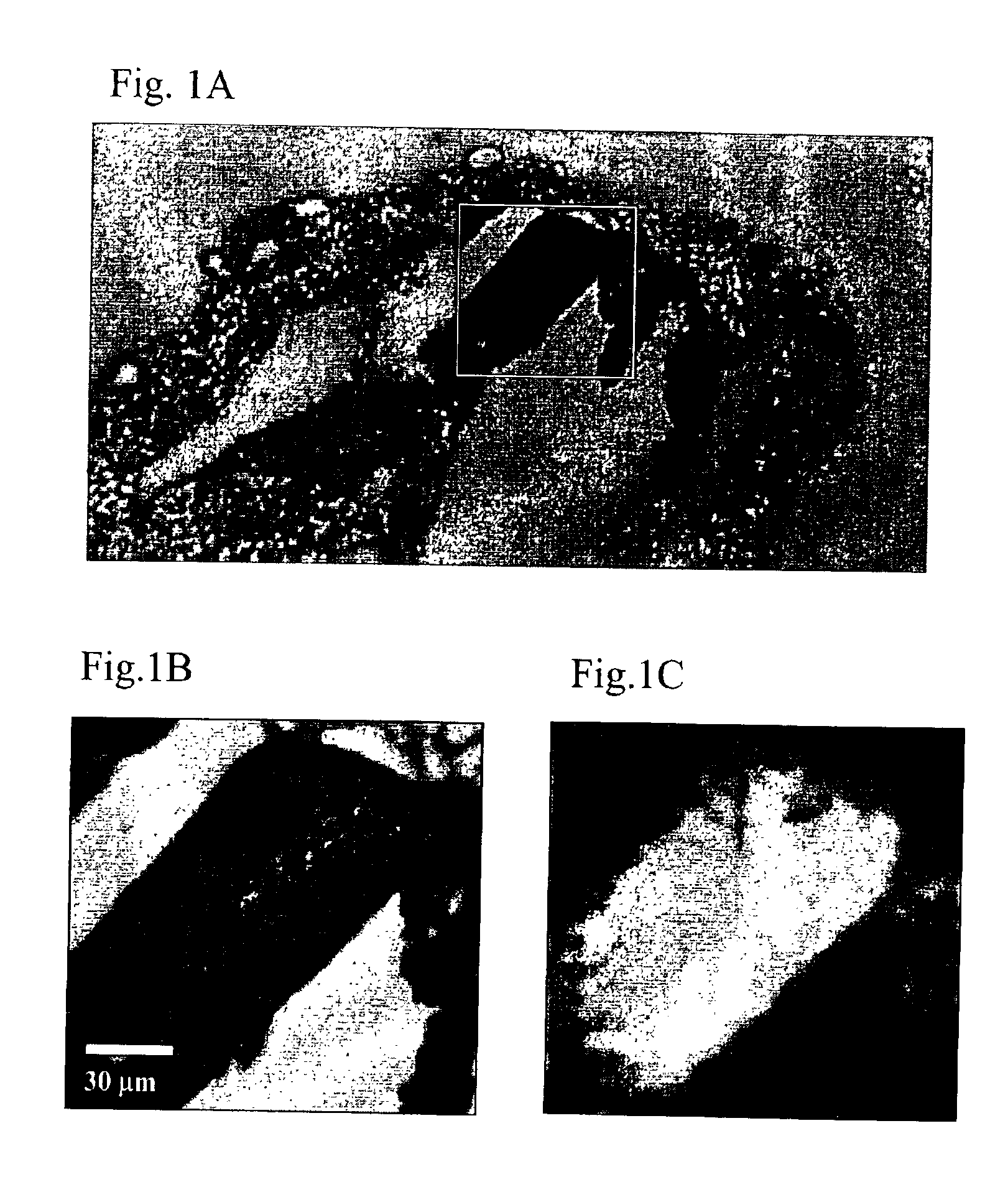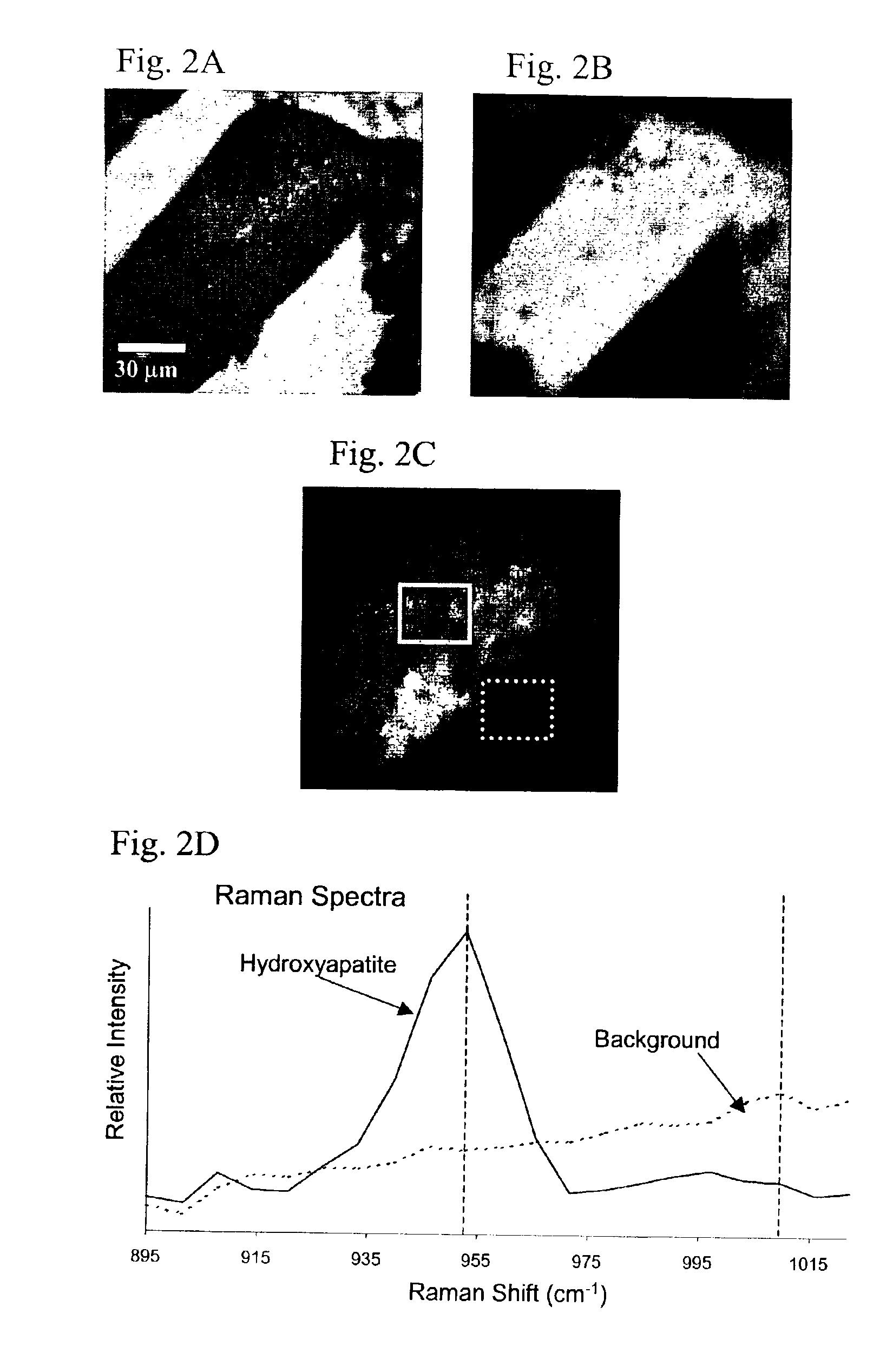Method for Raman chemical imaging and characterization of calcification in tissue
a chemical imaging and tissue technology, applied in the field of tissue evaluation, can solve the problems of significant cancer, relatively slow process, and loss of lives
- Summary
- Abstract
- Description
- Claims
- Application Information
AI Technical Summary
Problems solved by technology
Method used
Image
Examples
Embodiment Construction
[0029]Raman Spectroscopy
[0030]When light interacts with matter, a portion of the incident photons are scattered in all directions. A small fraction of the scattered radiation differs in frequency (wavelength) from the illuminating light. If the incident light is monochromatic (single wavelength) as it is when using a laser source or other sufficiently monochromatic light source, the scattered light which differs in frequency may be distinguished from the light scattered which has the same frequency as the incident light. Furthermore, frequencies of the scattered light are unique to the molecular or crystal species present. This phenomenon is known as the Raman effect.
[0031]In Raman spectroscopy, energy levels of molecules are probed by monitoring the frequency shifts present in scattered light. A typical experiment consists of a monochromatic source (usually a laser) that is directed at a sample. Several phenomena then occur including Raman scattering which is monitored using instru...
PUM
| Property | Measurement | Unit |
|---|---|---|
| time | aaaaa | aaaaa |
| thick | aaaaa | aaaaa |
| Raman chemical imaging spectrometer | aaaaa | aaaaa |
Abstract
Description
Claims
Application Information
 Login to View More
Login to View More - R&D
- Intellectual Property
- Life Sciences
- Materials
- Tech Scout
- Unparalleled Data Quality
- Higher Quality Content
- 60% Fewer Hallucinations
Browse by: Latest US Patents, China's latest patents, Technical Efficacy Thesaurus, Application Domain, Technology Topic, Popular Technical Reports.
© 2025 PatSnap. All rights reserved.Legal|Privacy policy|Modern Slavery Act Transparency Statement|Sitemap|About US| Contact US: help@patsnap.com



